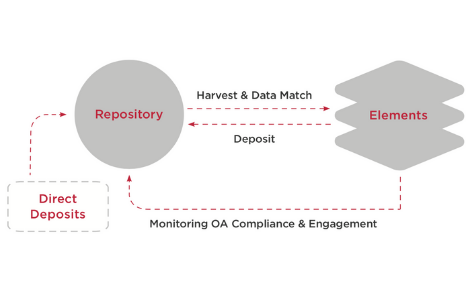
In early 2019 Symplectic partnered with Jisc, the University of Cambridge and Sheffield Hallam University to undertake a pilot study to review the technical compatibility of using the Jisc Publications Router together with Symplectic Elements to help UK institutions comply with their open access mandates.
The Jisc Publications Router is an alerting service that automatically sends notifications about research articles to institutions’ repositories. These notifications may include full text of the article, in a version agreed by the publisher, or they may just consist of metadata and are designed to help institution’s prepare for the REF and comply with UK open access mandates. Available to Jisc Members, the Router currently offers integrations with DSpace and EPrints.
The pilot sought to explore the viability of using the Jisc Publications Router
in conjunction with Elements, by integrating both with the institution’s repository.

Our newest repository integrations, based on our Repository Tools 2 (RT2) framework, are rich bi-directional integrations which allow institutions to use Elements to both deposit to and harvest from their institutional repository. Our RT2 harvest functionality establishes the repository as a data source for Elements, allowing us to harvest research outputs from the institution’s repository and match them to existing Elements records. This ensures that Elements maintains an accurate and up-to-date representation of the research outputs in your repository; allowing Elements to provide authoritative open access monitoring and minimises duplicates.
The pilot sought to test a networked ecosystem approach, bringing together the strengths of the Publications Router and Elements. In the tested set-up, the Publications Router is integrated directly with the institutional repository, which then provides notifications to DSpace and/or EPrints. These notifications become records in the repository which are then harvested into Elements via a Repository Tools 2 connection where they can be automatically matched to existing records in the system.
By working with two partner institutions, University of Cambridge (DSpace) and Sheffield Hallam University (EPrints), we were able to test the effectiveness of such a method and as a result are pleased to confirm that the pilot successfully demonstrated that the Router and Elements are technically compatible when used in this way.
Another key outcome of this pilot is that it helped us identify ways to guide our clients when they are considering using the Publications Router in conjunction with Elements.
If you would like additional information about how to implement this at your institution, please contact Symplectic Support.